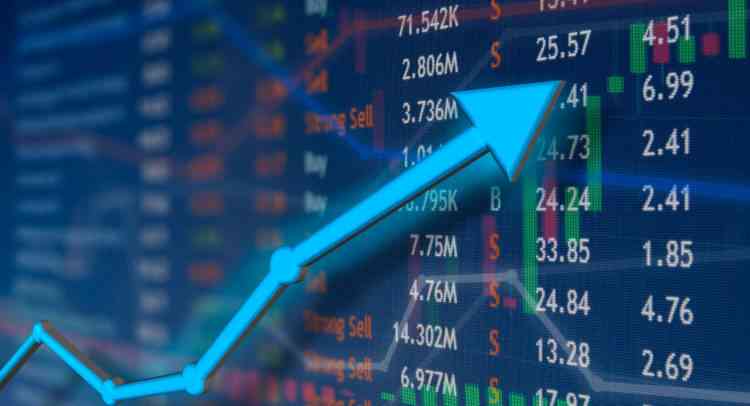
If you owned US stocks over the past decade, you’ve been richly rewarded.
It’s payback time.
Over the next decade or two, investors will experience bull and bear markets, but at the end of the journey they will not be far from where they started.
When you own a stock, your returns come from two sources: appreciation of the stock plus any dividend payment.
The same logic applies to the stock market overall. The average dividend yield of the US market today is about 1,7%.
If you deconstruct price appreciation, it comes from two sources: earnings growth and/or price-to-earnings growth.
The S&P 500 SPX, +1.05% is at 4119 currently and earnings estimates for 2022 are around $200. This means that the average stock in this index is trading just above 20 times earnings. That’s a high number, especially in a rising interest-rate environment, but not insane (the historical average is around 15x).
I am using the S&P 500 as a proxy for the US market. It is anything but a perfect proxy, but it is easy to find current and historical data for this index, and I can still reach a vaguely correct conclusion.
- ‘Zim’s retailers deserve a wage subsidy’
- ‘Zim’s retailers deserve a wage subsidy’
- Africa’s debt conundrum
- High input costs could hit crop output
Keep Reading
What really worries me is the “E” in the P/E ratio. Another way to think of the “E” is that it is sales multiplied by profit margin. Here, I will be using data for the full economy that the US government has been tracking since 1947.
Therefore, gross domestic product (GDP) is the sales of the economy.
Currently, profit margins are 11,5%, down from 12,1%, which was an all-time high just a few months ago. Over the past 75 years, corporate profit margins have averaged about 7,1%. Over the past 30 years, profit margins were 8,2%.
Profit margins in the past were one of the most mean-reverting figures in finance. They mean-revert because capitalism works — excess profits eventually get competed away.
Of course, the composition of the US economy has changed tremendously over the years — a lot of production has been shipped overseas and the US is more of a services economy today.
In the 1980s, profits averaged 5,3%, in the 1990s 5,7%, and in the first decade of this century they were 7,9%.
New year sale extended
If profit margins settle at the level of the past decade, at 10,2%, then the market will be trading at about 22 times earnings. However, over the past decade corporate profits have benefited tremendously from globalisation, low (near-zero) interest rates, and tax cuts.
Knowing what we know today, it is unlikely that profit margins will remain at their recent elevated levels. Globalisation is reversing, corporate tax rates are likely to go up due to US government debt being at the highest level since WWII, and nobody knows where interest rates will land. If they decline, it is because we are in a recession, which is not good for profit margins. If interest rates stay at this level or, even worse, increase, this will be taking place when corporate debt to GDP is at the highest level ever.
If margins return to their former levels, we may find that the earnings power of the S&P 500 is $91-$143 per share, or in other words, stocks are trading at between 29- and 45 times earnings.
It gets worse. When debt increases, it is the fuel for economic growth; conversely, high debt sucks the oxygen out of economic growth. Thus, it is likely that the US economy will grow at a slower pace over the coming decade or two than in the past.
As P/Es stop going up, investors who got used to making money by the bucket load will get dispirited with returns from stocks and start losing interest in them. This is why P/Es embark on a long, often multi-decade decline. This decline chips away at earnings growth, which is likely to be lower (in real, after-inflation terms) than in the previous two decades. In this environment, the stock market may levitate a lot, bounce up and down (you’ll have mini bull and bear markets), but decades later you end up at the same place you started.
As a counter to this, my firm continues to employ our “active value” investing strategy, built on the secure foundation of value investing philosophy:
Become an active value investor. Traditional buy-and-forget-to-sell investing is not dead but is waiting for the next secular bull market to return — and that bull is still far, far away. Sell discipline needs to be kicked into higher gear.
Increase your margin of safety. Value investors seek a margin of safety by buying stocks at a significant discount to protect them from overestimating the “E.” In this environment that margin needs to be even more beefed up to account for the impact of constantly declining P/Es.
Don’t fall into the relative valuation trap. Many stocks will appear cheap based on historical valuations, but past bull market valuations will not be helpful again for a long time. Absolute valuation tools such as discounted cash flow analysis should carry more weight.
Don’t time the market. Though market timing is alluring, it is very difficult to do well. Instead, value individual stocks, buying them when they are cheap and selling them when they become fairly valued.
Don’t be afraid of cash. Secular bull markets taught investors not to hold cash, as the opportunity cost of doing so was very high. The opportunity cost of cash is a lot lower during a sideways market. Staying fully invested will force you to own stocks of marginal quality or ones that don’t meet your heightened margin of safety. Sometimes the best and hardest thing to do is to do nothing. - MarketWatch
- Katsenelson is CEO and chief investment officer of Investment Management Associates. He is the author of Soul in the Game – The Art of a Meaningful Life.











